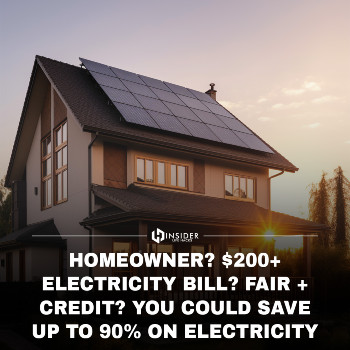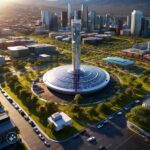Sustainable Cities of the Future: Self-Sufficient Urban Paradises Powered By Renewables?
Urban Utopia or Unrealistic Dream?
As the world’s population continues to urbanize at an unprecedented rate, cities are grappling with significant challenges related to energy consumption, pollution, and resource depletion. The concept of self-sufficient, off-grid cities powered entirely by renewable energy sources like solar, wind, and geothermal has emerged as a potential solution to these pressing issues. But is this vision of sustainable urban living a realistic goal or an eco-utopian fantasy?
The Promise of Sustainable Urban Living
Proponents of off-grid cities argue that transitioning away from fossil fuels and embracing renewable energy sources could dramatically reduce the environmental impact of urban areas. By harnessing the power of the sun, wind, and earth, these cities would not only minimize their carbon footprint but also promote greater energy independence and self-sufficiency.
The concept extends beyond just energy production, however. Sustainable urban design principles envision cities that are meticulously planned and optimized for efficiency, with features like:
- Vertical farming and urban agriculture to reduce food miles and promote local food production
- Comprehensive water recycling and conservation systems to minimize waste
- Smart grid technologies and microgrids to manage and distribute renewable energy effectively
- Green spaces and urban forests to improve air quality and promote biodiversity
In essence, these cities of the future would strive to create a harmonious balance between human habitation and the natural environment, minimizing our ecological footprint while providing a high quality of life for residents.
Pioneering Projects and Ambitious Goals
While the concept of entirely off-grid, self-sufficient cities may still seem like a distant dream, several initiatives around the world are already taking significant steps in that direction. One of the most ambitious endeavors is the proposed City of Telosa by billionaire Marc Lore, which aims to be a city built from scratch with sustainability at its core.
Envisioned as a modern city designed for the future, Telosa would be powered entirely by renewable energy sources like solar, wind, and hydroelectric power. It would also incorporate cutting-edge technologies like autonomous vehicles, drone delivery systems, and sustainable food production methods like vertical farming. According to Lore, the goal is to create a city that serves as a “new model for urban living” and addresses many of the challenges faced by existing cities [1].
While Telosa is still in the early planning stages, other cities around the world have already set ambitious targets to transition to renewable energy and carbon neutrality in the coming decades. Copenhagen, for example, aims to become the first carbon-neutral capital by 2025, while Vancouver has pledged to derive 100% of its energy from renewable sources by 2050 [2].
Overcoming Challenges and Addressing Concerns
Infrastructure and Cost Hurdles
Despite the potential benefits and the pioneering efforts underway, the path toward creating self-sufficient, off-grid cities is not without significant challenges. One of the most substantial hurdles is the sheer scale of infrastructure overhauls and investment required to transition existing urban areas to renewable energy sources and self-sustaining systems.
Cities are incredibly complex organisms, with intricate networks of power grids, transportation systems, and utilities that have been built over decades, if not centuries. Retrofitting or replacing these systems to accommodate off-grid renewable energy production and distribution would be a monumental undertaking, both logistically and financially.
Furthermore, the costs associated with developing entirely new cities from the ground up, like Telosa, are staggering. Estimates suggest that the price tag for Telosa could exceed $400 billion, a sum that would require significant private and public investment [3].
Reliability and Energy Storage Challenges
Another significant challenge facing the vision of off-grid, renewable-powered cities is the inherent intermittency of sources like solar and wind. While these technologies have advanced significantly in recent years, they still face limitations in terms of consistent energy production due to factors like weather patterns and seasonal variations.
To truly achieve self-sufficiency and reliable power, these cities would need to incorporate robust energy storage solutions, such as large-scale battery systems or other emerging technologies like hydrogen fuel cells. However, many of these storage options are still relatively expensive and face scalability challenges of their own.
Public Buy-In and Lifestyle Changes
Beyond the technical and financial hurdles, the success of sustainable, off-grid cities also hinges on public acceptance and a willingness to embrace lifestyle changes. The principles of sustainability and resource conservation often require a shift in mindset and behavior, from adopting more sustainable transportation options to adjusting energy consumption habits.
Convincing large populations to make such changes can be challenging, particularly in established cities where existing patterns and infrastructure may be deeply ingrained. Education, incentives, and a gradual transition period may be necessary to foster public buy-in and ensure the long-term viability of these sustainable urban models.
The Takeaway: A Bold Vision for a Sustainable Future
While the concept of self-sufficient, off-grid cities powered by renewable energy sources undoubtedly presents significant challenges, it also represents a bold and necessary vision for a more sustainable future. As urbanization continues to accelerate and the impacts of climate change become increasingly dire, rethinking the way we design and power our cities is not just an eco-friendly aspiration but an existential imperative.
Initiatives like the City of Telosa and the ambitious goals set by cities like Copenhagen and Vancouver demonstrate that the dream of sustainable urban living is not merely a utopian fantasy but a tangible objective that is already being pursued. With continued innovation, investment, and public support, the cities of tomorrow could very well be self-sustaining, renewable-powered paradises that harmonize human habitation with the natural environment.
Of course, the path to realizing this vision is riddled with obstacles, from infrastructural and financial hurdles to the need for widespread lifestyle changes. But by embracing a long-term, holistic approach and fostering collaboration among policymakers, urban planners, engineers, and the public, we can work toward creating cities that are not only livable but truly sustainable for generations to come.






